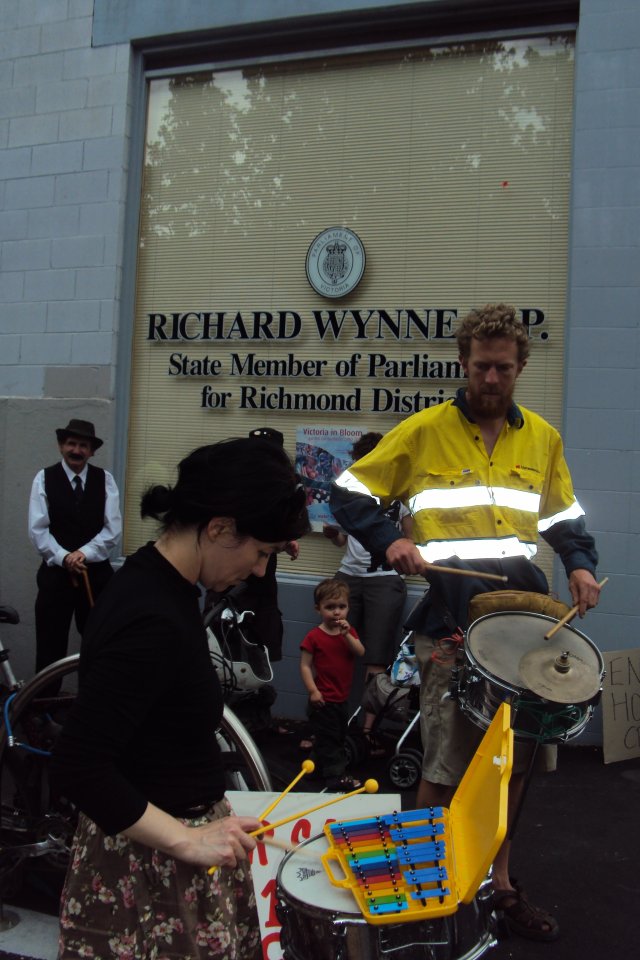
Public housing in Victoria (and elsewhere around Australia) is in a state of crisis. For at least the last two decades, successive state governments have failed to meet the challenge of providing public housing to all who need it.
Instead, they have relied on the free market to provide “affordable housing” as a means of avoiding their responsibilities. The result has been a disaster, with nearly 40,000 people on waiting lists.
This almost certainly underestimates the number of people who need public housing. Many people simply don’t register because of the long waiting times, or drop off the list due to frequent forced changes of address.
The lack of public housing has an impact on the whole community. It forces people who would otherwise be in public housing onto the private rental market, which has been unable to cope with the demand. This has raised rents often beyond the means of low and medium income workers.
A recent Tenants Union of Victoria report showed that a family on the average wage pay 40% of their income to rent a house in Brunswick. The Housing for the Aged Action Group has documented numerous cases where pensioners have been forced to pay 50% or more of their income to rent often poor quality properties.
The official definition of housing stress is where 30% of income is devoted to rent, so it is clear that many people face a permanent struggle to survive.
Both major political parties now support the introduction of "social housing — a friendly word to describe a malignant and reactionary policy.
In essence, social housing is the privatisation of public housing. Public housing is turned over to not-for-profit housing associations and providers, which then manage them on behalf of the government.
One of the prime targets for these developments is the many inner city high-rise public housing estates now considered to be prime real estate.
Despite promises to redevelop these estates as a fully integrated mix of private and public housing, where these estates have been redeveloped (Carlton, Kensington and Port Melbourne) the two components have been physically separated, in some cases by brick walls.
Public housing advocates stress that a strong public housing presence, particularly in the inner city, will help maintain the diversity essential for a healthy functioning society.
But there is no evidence the Victorian government supports this idea. On the contrary, the housing crisis has been deepened by governments that have sold public land to private developers with little or no provision for public housing.
When compared with traditional public housing social housing has the following disadvantages:
• Housing associations can charge up to 30% of a tenant's income as rent, compared with 25% now. Since housing associations have to raise their own funds for maintenance from the rents they collect, there is a strong tendency for them to cherry-pick tenants with the highest incomes.
Already Housing Associations have taken only a third of their tenants from the public housing waiting lists. The government says it expected them to take 50% from the waiting lists.
• Rents can be adjusted every six months, unlike the situation now, in which rents rise only if income does.
Social housing tenants may be able to apply for rental assistance to cover the difference between 25% and 30% rents, but the increasingly austere character of the government’s economic policies means this is not a dependable source of assistance.
• Public housing tenants no longer have long term security of tenure. After 10 years, this right can be revoked and the associations will have the right to sell dwellings to investors and/or raise rents to market levels.
• Housing associations have made it clear they intend to enforce the rule of one bedroom one tenant. This will mean that public housing tenants who have raised children who have since left home may be forced to move into smaller units.
This ignores the fact that their children often return home on a temporary or permanent basis. A forced relocation to a new suburb away from an area in which tenants have spent a considerable part of their adult lives will lead to loss of friends and support networks.
The Defend and Extend Public Housing Group has been formed to challenge these policies and, if possible, reverse them. It is encouraging public tenants to make submissions to the auditor-general who is conducting a review of government policy in the area.
Previous reports have helped expose the failure of government policy in a number of areas. We also intend to hold a public meeting and rally in the near future. Details of this and other events can be found at our Facebook site.
